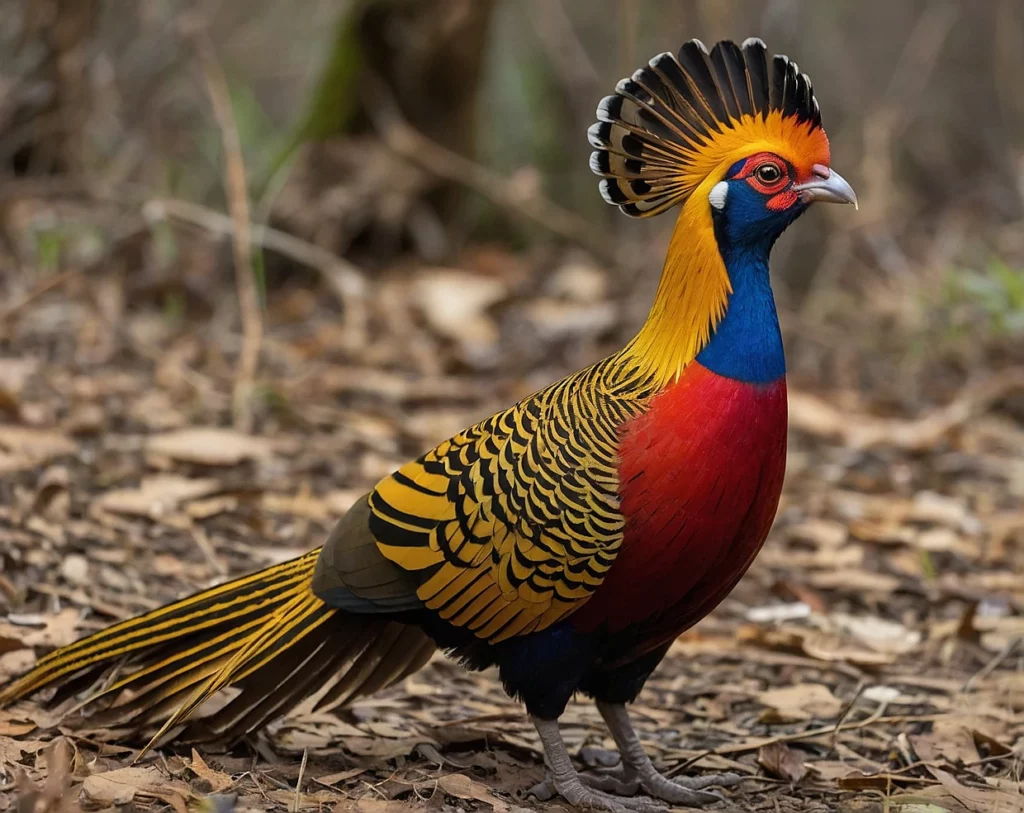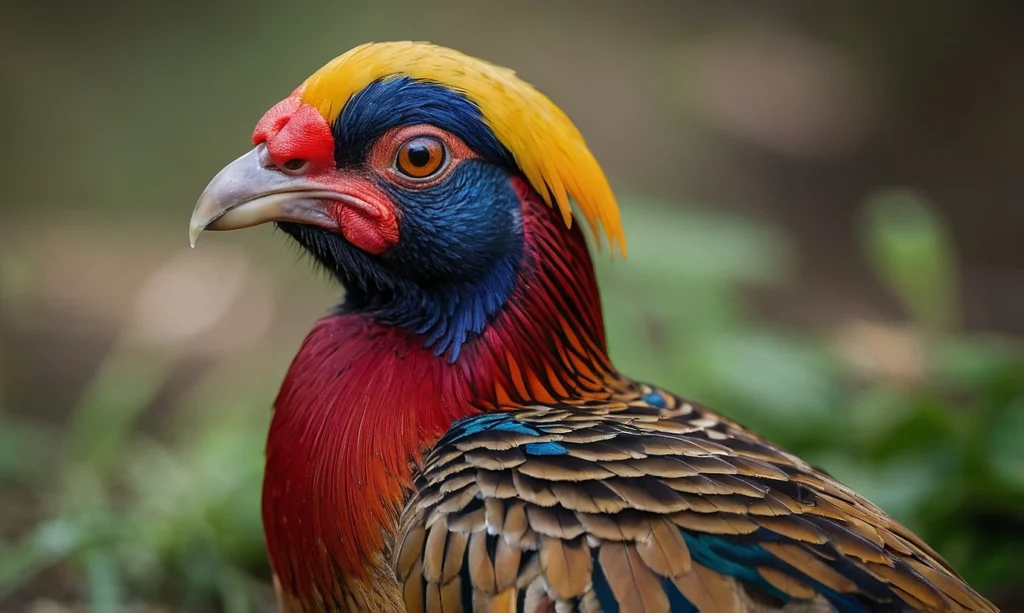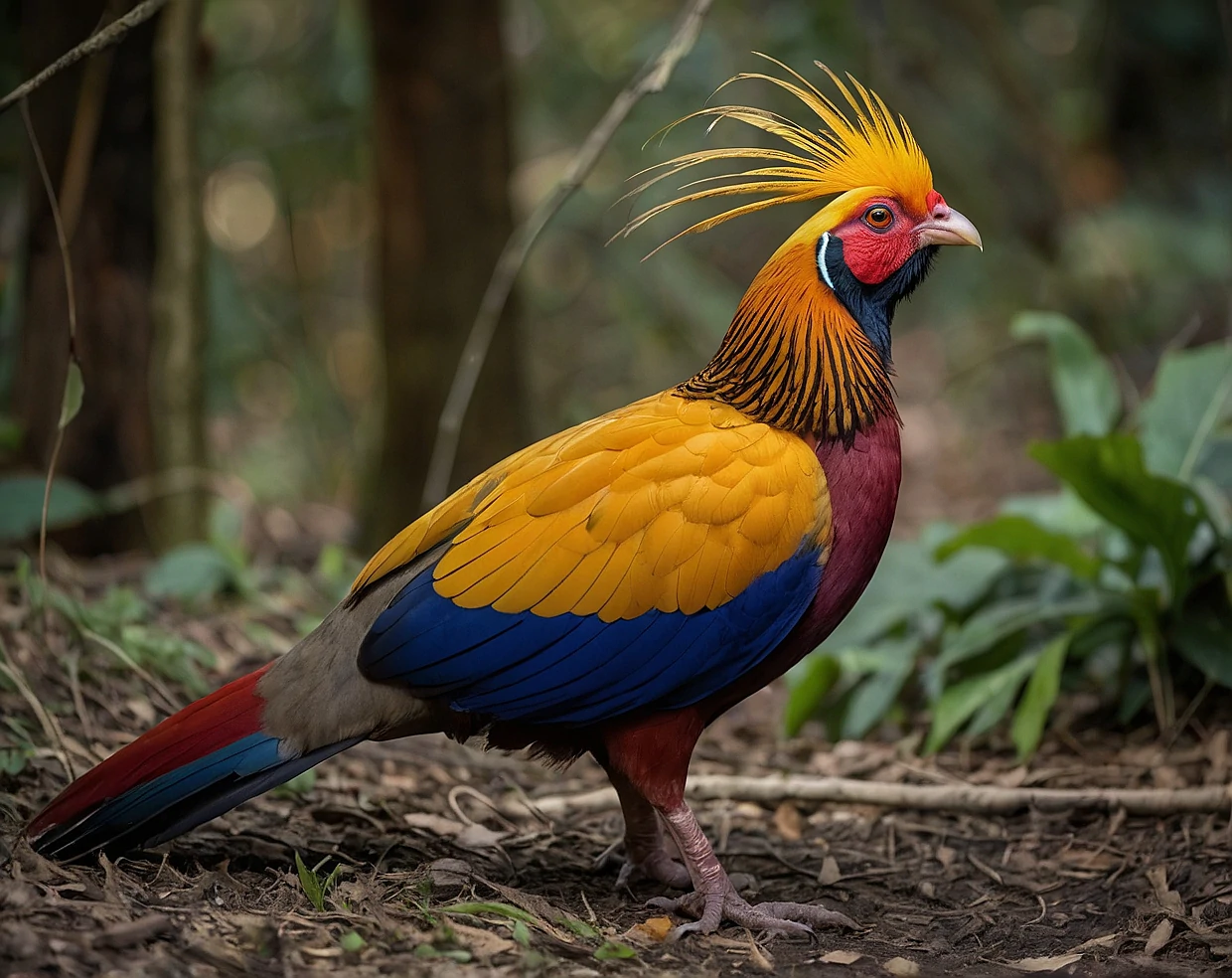The Golden Pheasant, with its resplendent plumage and fascinating behaviors, captivates nature enthusiasts and bird watchers alike. In this comprehensive guide, we delve into the world of the Golden Pheasant, exploring its habitat, distinctive features, and the remarkable aspects of its life in the wild.

Discovering the Golden Pheasant: A Closer Look
The Golden Pheasant (Chrysolophus pictus) is a striking bird native to the mountainous regions of Western China. Known for its vibrant colors and elaborate plumage, this species has also been introduced to various parts of the world due to its aesthetic appeal.
Habitat and Distribution
Golden Pheasants thrive in dense forests with ample undergrowth, preferring altitudes between 1,500 to 3,000 meters (4,900 to 9,800 feet) above sea level. They are predominantly found in the provinces of Sichuan, Gansu, Shaanxi, and Henan in China. Additionally, they have been introduced and established in countries like the United Kingdom, United States, and New Zealand, where they adapt to similar forested habitats.
Physical Characteristics
The male Golden Pheasant is a true spectacle of nature’s artistry. It boasts a golden crest extending from its crown, a scarlet face, and a fiery orange “cape” that transitions into a rich gold along its back. The rest of its plumage is a mosaic of deep blues, greens, and shimmering yellows, with the tail feathers extending up to 2 feet in length. In contrast, the female is more subdued in appearance, sporting mottled brown plumage that camouflages well with the forest floor, aiding in nesting and protection.
Behavior and Adaptations
Golden Pheasants are primarily ground-dwelling birds, spending much of their time foraging for seeds, berries, insects, and tender plant shoots. Their diet varies seasonally, with a preference for protein-rich foods during breeding seasons to support egg production and chick rearing. These birds are known for their cautious nature, often freezing or blending into their surroundings at the slightest hint of danger.
Breeding and Nesting
During the breeding season, which typically spans from April to June, male Golden Pheasants engage in elaborate courtship displays to attract females. These displays involve spreading their colorful plumage, erecting their distinctive crest, and emitting loud calls to establish dominance and allure potential mates. Once a female is enticed, she selects a secluded spot on the forest floor to construct a nest from twigs, leaves, and grass. She lays a clutch of 8 to 12 eggs, which she diligently incubates for about 22 to 23 days until hatching.
Conservation Status and Threats
While the Golden Pheasant is not currently considered globally threatened, habitat loss due to deforestation and agricultural expansion poses a significant risk to their populations, especially in their native range in China. Conservation efforts focus on preserving their forest habitats and monitoring introduced populations to ensure their sustainability.

FAQ: Unveiling the Majestic Beauty and Intriguing Habits of the Golden Pheasant
Why is the Golden Pheasant called “golden”?
The Golden Pheasant derives its name from the striking golden-yellow coloration of its back and crest feathers, which shimmer brilliantly in sunlight.
What do Golden Pheasants eat in the wild?
Golden Pheasants have an omnivorous diet that includes seeds, berries, insects, and tender vegetation like shoots and leaves.
How long do Golden Pheasant eggs take to hatch?
Golden Pheasant eggs typically hatch after an incubation period of about 22 to 23 days, during which the female diligently tends to her nest.
Are Golden Pheasants aggressive towards each other?
Male Golden Pheasants can display aggression towards rival males during breeding season to establish dominance and secure mating opportunities. However, they are generally non-aggressive towards other species.
The Golden Pheasant stands as a testament to the beauty and biodiversity of our natural world. With its resplendent plumage, intricate behaviors, and vital ecological role, this bird continues to fascinate and inspire admiration. Whether glimpsed in its native habitat in China’s mountainous forests or flourishing in introduced populations worldwide, the Golden Pheasant remains an enduring symbol of nature’s majesty.
Explore further to uncover more about these captivating birds and their role in the ecosystems they inhabit. Witness firsthand the dazzling spectacle of the Golden Pheasant, a creature that embodies the harmony and wonder of our planet’s diverse wildlife.


You might also like
Uncategorized
Honey Roasted Carrots with Garlic, Lemon, and Thyme: A Perfectly Sweet and Savory Side Dish
Uncategorized
Crispy Homemade French Fries Recipe — Golden, Crunchy, and Irresistible!
Uncategorized
Homemade Goldfish Crackers: A Fun and Cheesy Snack You’ll Love